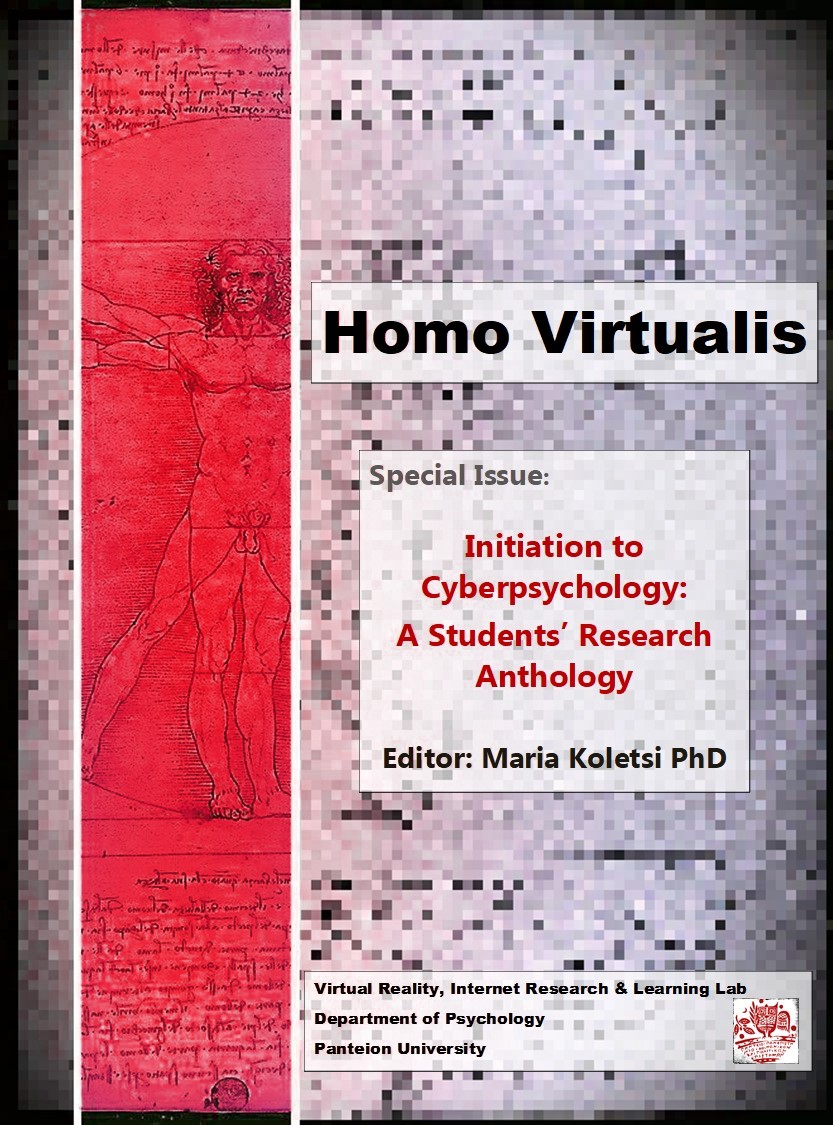Social Robots: The case of Robot Sophia
Περίληψη
In recent years there has been an increasing use of robots in various areas of public and private life. This leads to a set of ethical, social and interpersonal dilemmas. The subject of this paper concerns attitudes towards social robots, starting with the issue of citizenship and moving on to the roles that can be attributed to a robot with Artificial Intelligence. A central example was the social robot Sophia, which has artificial intelligence, and it has been given to it a citizenship. In order to investigate the issue, a literature review of previous research articles related to social robots was initially conducted. An attitudes’ questionnaire was then constructed, to which 137 participants answered. The results showed that, the majority of the sample did not want robots to acquire citizenship and equal rights as humans, nor did they want robots to be used for roles involved in interpersonal relationships, such as raising children, work, friendship, or love. In general, it has been observed that the research sample was not particularly prepared for the existence of social robots in society, while they have been associated with negative or malicious purposes. Gender and age also play an important role regarding attitudes towards social robots. However, this is an open issue that leaves much more unanswered questions and concerns.
Λεπτομέρειες άρθρου
- Πώς να δημιουργήσετε Αναφορές
-
Kouravanas, N., & Pavlopoulos, A. . (2022). Social Robots: The case of Robot Sophia. Homo Virtualis, 5(1), 136–165. https://doi.org/10.12681/homvir.30320
- Ενότητα
- Έρευνες προπτυχιακών φοιτητών

Αυτή η εργασία είναι αδειοδοτημένη υπό το CC Αναφορά Δημιουργού 4.0.
Οι συγγραφείς των άρθρων που δημοσιεύονται στο περιοδικό διατηρούν τα δικαιώματα πνευματικής ιδιοκτησίας επί των άρθρων τους, δίνοντας στο περιοδικό το δικαίωμα της πρώτης δημοσίευσης.
Άρθρα που δημοσιεύονται στο περιοδικό διατίθενται με άδεια Creative Commons 4.0 και σύμφωνα με την άδεια μπορούν να χρησιμοποιούνται ελεύθερα, με αναφορά στο/στη συγγραφέα και στην πρώτη δημοσίευση για μη κερδοσκοπικούς σκοπούς.
Οι συγγραφείς μπορούν να καταθέσουν το άρθρο σε ιδρυματικό ή άλλο αποθετήριο ή/και να το δημοσιεύσουν σε άλλη έκδοση, με υποχρεωτική την αναφορά πρώτης δημοσίευσης στο περιοδικό
Οι συγγραφείς ενθαρρύνονται να καταθέσουν σε αποθετήριο ή να δημοσιεύσουν την εργασία τους στο διαδίκτυο πριν ή κατά τη διαδικασία υποβολής και αξιολόγησής της.



